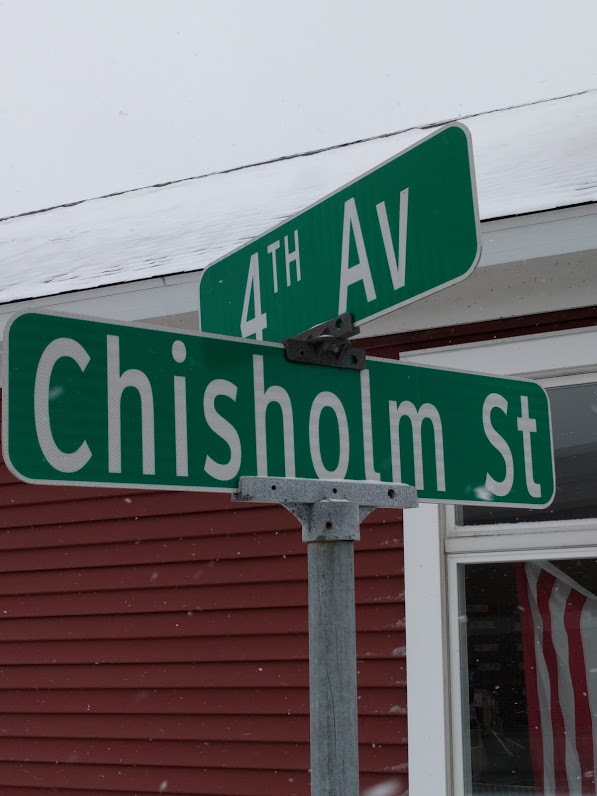We’ve told you about some of the namesakes surrounding Alpena history in our previous blogs, “Alpena: What’s in a Name?”, and “The Names, the Myths and the Legends of the Sanctuary of the Great Lakes”, but have you ever wondered about Alpena’s streets? How were they laid out, and where did they get their names? We have a few tidbits of fun information for you:
In 1855, before the city of Alpena was officially established, the lands around the mouth of the Thunder Bay River were purchased, sight unseen, by George N. Fletcher, James Lockwood, John Minor, and John Oldfield, who were seeking land for timber harvesting. They traveled to the area to explore their purchases, bringing along with them a surveyor. Daniel Carter, an associate, had settled in the area shortly before the men arrived.
Mr. Fletcher, Mr. Minor, and Mr. Oldfield were supporters of John C. Fremont, the Republican candidate for the United States President, and carried a Fremont banner with them. The three men decided to name the location Fremont and in celebration attempted to erect their Fremont flag. Legend has it that the men were also quite intoxicated. They were having trouble getting the flag up and asked Mr. Carter for his assistance. He refused due to political party differences, telling them that he would not help raise a flag he couldn’t support.
Mr. Carter walked a short distance away to watch the activity. Once the flag was in place, the gentlemen proceeded to lay out the city of Alpena. River Street was the first to be laid out. The crookedness of River Street, which remains today, is said to have been due to the Fremont celebration. (For many reasons, the name of Fremont didn’t stick, and eventually, Alpena won out).
As the City continued to grow, and streets began to develop, the naming continued. Miller Street, Avery Street, Richardson Street, Potter Street, Campbell Street, and Beebe Street were named after early business and lumber men. William H. Potter was an early Alpena pioneer and a distinguished businessman who came to Alpena in the late 1860’s. He was considered one of the most influential citizens of that time.
White, Dunbar, Mirre and Lewis streets were named after early surveyors. A lot of early business took place on the north side of the Thunder Bay River, thus Merchant and Commercial streets were named. Many of the other streets were named after early presidents and governors (Washington, Grant, Wisner, Blair, Bagley, Baldwin, McKinley, etc.). Tuttle Street was named for Alpena pioneer J.B. Tuttle, who dedicated the land for Tuttle’s Addition in 1878, and Chisholm Street was developed on land that was owned by William A. Chisholm, who was an early lumberman from Lincoln, Canada.
Liberty was originally named Bismarck Street until WWI when it was renamed. Otto von Bismarck was a German political leader during WWI, so Liberty was a fitting replacement.
Most interesting is Alpena’s State “Street” (Avenue). It was originally named “State of Maine Street” after the many people from the state of Maine who lived on it.
More Street Talk:
• A Street is a public way that has buildings on both sides of it. Streets run perpendicular to avenues, typically east and west.
• An Avenue is a public way that has buildings or trees on either side. They run perpendicular to streets, typically north and south.
• 2nd Avenue is said to be the most common street name in the United States at 10,866
Let us know if you have more fun facts or memories about Alpena’s street names, we’d love to hear from you!
*Sources:
“The Town That Wouldn’t Die”, by Robert E. Haltiner
“A History of the Place Names of Alpena County“, by Catherine Herron
fivethirtyeight.com/features/whats-the-most-common-street-name-in-america/






 420 N. 2nd Ave. Alpena, MI 49707
420 N. 2nd Ave. Alpena, MI 49707 989-340-2288
989-340-2288 